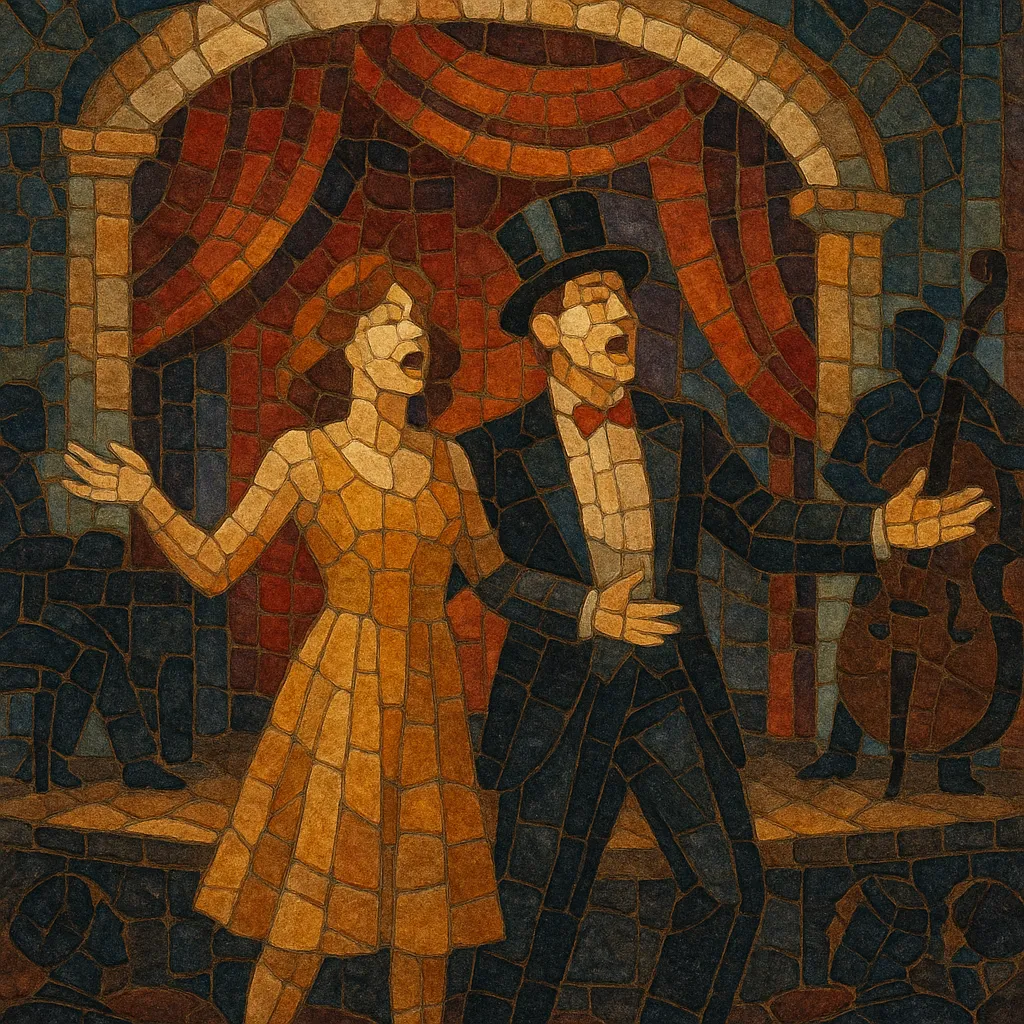Musical (musical theatre) is a narrative stage form that integrates songs, spoken dialogue, acting, and dance to tell a story. Its core aim is dramatic storytelling in which music advances plot, deepens character, and shapes emotional arcs, often through recurring motives and reprises.
Developed primarily on Broadway (New York) and later the West End (London), the genre blends operetta’s melodic lyricism, vaudeville’s variety entertainment, revue’s song-driven showcase, and Tin Pan Alley’s popular songcraft. Musicals range from intimate chamber pieces to large-scale "megamusicals," and from traditional book musicals to rock, hip‑hop, and concept-driven works. The musical’s songbook has fed the Great American Songbook and popular music at large, while the stage craft has influenced film, television, and concert performance.
Musical theatre crystallized in the early 1900s United States, drawing on European operetta (Offenbach, Gilbert & Sullivan), ballad opera, and German Singspiel, as well as American vaudeville, revue, minstrel shows, and Tin Pan Alley popular songwriting. Early figures like George M. Cohan and Irving Berlin shaped a briskly paced, song‑forward commercial theatre centered on Broadway.
Show Boat (1927, Jerome Kern & Oscar Hammerstein II) signaled a shift to the “integrated” book musical, where songs and dances serve character and plot. Oklahoma! (1943, Rodgers & Hammerstein) codified this model with cohesive storytelling, recurring motifs, and dance as drama.
Rodgers & Hammerstein, Lerner & Loewe, Bernstein, Porter, Berlin, and the Gershwins defined an era of melodically rich, structurally integrated shows (Carousel, South Pacific, My Fair Lady, West Side Story). The era produced standards that migrated to jazz and traditional pop repertoires.
Hair (1967) ushered rock idioms onto the stage. Stephen Sondheim advanced the “concept musical” (Company, Follies) with sophisticated harmony, complex lyrics, and fragmented narrative. A Chorus Line (1975) popularized documentary and ensemble-driven storytelling.
A British “invasion” (Cats, Les Misérables, The Phantom of the Opera) emphasized spectacle, leitmotifs, and through-composed scoring, exporting Broadway globally. Disney’s entry (Beauty and the Beast, The Lion King) reconnected stage and screen, while jukebox and film-to-stage adaptations proliferated.
The genre absorbed hip‑hop (Hamilton), contemporary pop (Dear Evan Hansen), and genre hybrids (Hadestown). Small-scale chamber musicals and boundary-pushing works coexist with commercial blockbusters, and the ecosystem spans Broadway, West End, touring circuits, regional theatres, and school/community stages worldwide.


